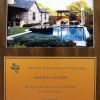Keep an Eye Out For These Fall Pests
September 18, 2015 | By webadmin
Fall is on its way and with it will come a few pesky garden pests. The cooler nights and a bit of extra rainfall is all it takes to signal certain pests that it’s time to get to work. Prevention is always the best medicine, but even with your best efforts pests can still show up in your landscape. The earlier you catch them, the easier they will be to eradicate.
Fall Webworms in Trees
Are you noticing large web-like masses covering branches on your trees? If so, fall webworms have moved in. Take a closer look and you’ll see the caterpillars crawling around inside the webs. While they’re crawling around, they’re munching on your tree’s leaves. Over time, a big population of webworms can cause a lot of defoliation, stressing your tree. Luckily, there are environmentally friendly ways to treat fall webworms: Trichogramma wasps, Bt (Bacillus thuringiensis) spray and Spinosad are good organic options to reduce webworms.
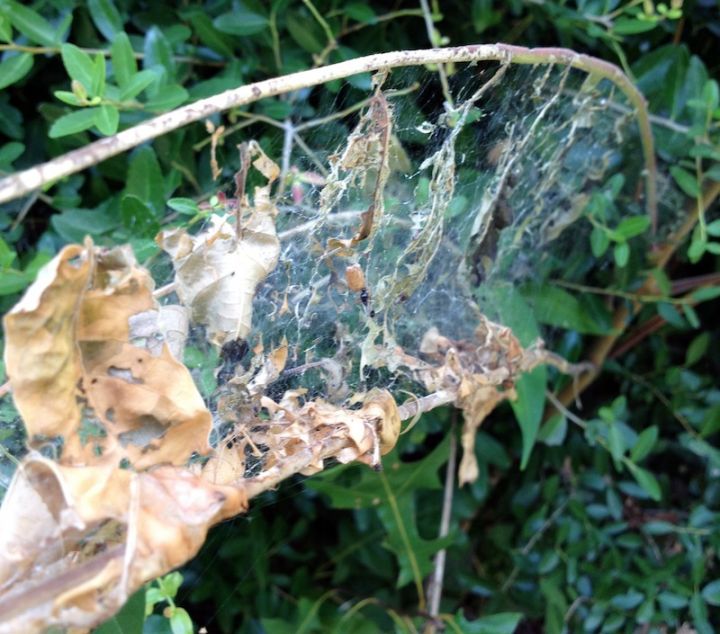
Beneficial Insects: Don’t kill these garden bugs! When you keep your landscape in a healthy balance, you’ll often benefit from beneficial predators helping you out!
Pill Bug Infestations: Should you worry?
When kept under control, pill bugs (Armadillidium vulgare) clean up garden waste such as decaying plants and animal or insect waste. When we have cooler, wetter weather, pill bugs can reproduce in large numbers and become a problem for your plants. When there are too many pill bugs, there may not be enough decaying matter for them to eat and they’ll instead turn to your green plants. Avoid infestations by keeping the garden clear of debris and dead or dying plants (this is where they can breed and feed), move wood piles away from the garden, and leave 8”-10” of space between mulch and the foundation of your home.
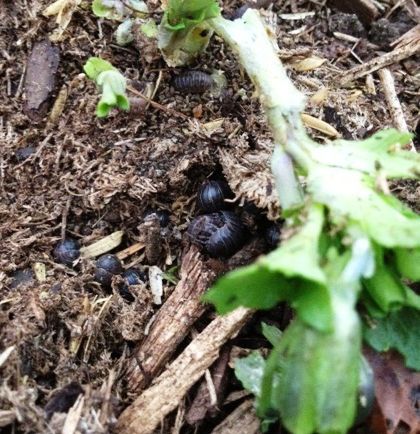
Lawn Destroyers
Grubs
Grubs are the larval stage of the June Beetle. In late-spring or early summer, the adult June beetles emerge from the soil to breed. They lay small eggs in the soil and then die afterwards. About two weeks later, the eggs hatch and small white larvae emerge. It’s these tiny larvae (grubs) that will feed on grass roots mid-summer through early fall and do most of the damage to your lawn. Therefore, the best time to treat for grubs is actually June through October, rather than in spring.
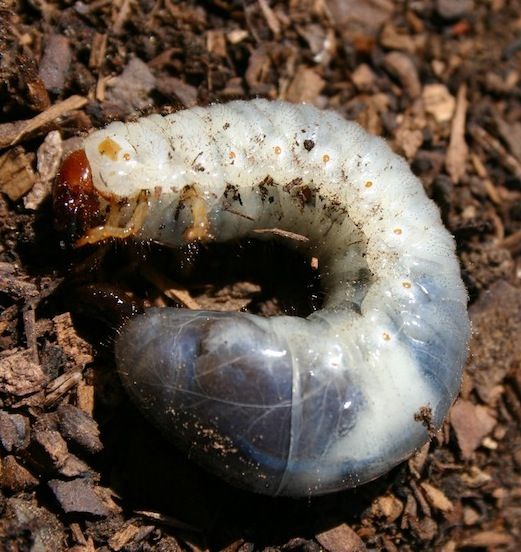
While a few grubs won’t do much harm, a significant infestation that continues over a few seasons can destroy grass and eventually kill your lawn. Beneficial nematodes are a good natural way to help suppress grub populations.
Fall Armyworms on the March
In recent years, fall armyworms have become a more frequent problem in Dallas area lawns. The caterpillars crawl along your lawn, eating away at the grass blades before pupating; after which the emerge as a pale colored moth in summer. These moths lay more eggs and the cycle starts all over again.
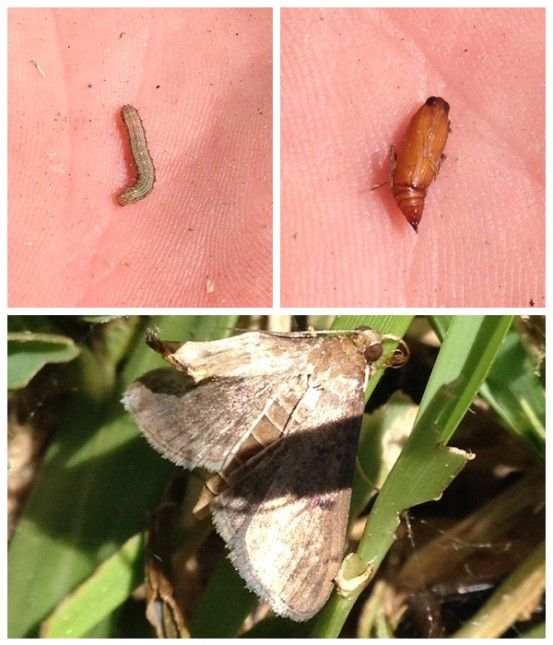
Photo reposted with permission via Soils Alive.
Bermudagrass Scale
If your Bermudagrass receives too much shade, has too much thatch build-up, or is drought-stressed, it may attract pests such as Bermudagrass scale. These tiny, pearl-like insects can be found along the nodes and crowns of the grass where they suck out the fluids. Lawns with Bermudagrass scale will turn yellow and then brown.
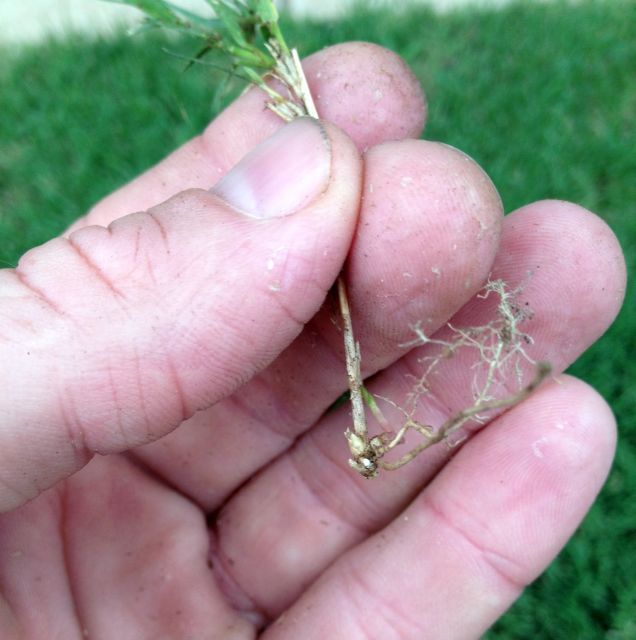
Photo reposted with permission via Soils Alive.
Whiteflies
The cool, wet weather of spring caused big infestations of whiteflies this year. Now that temperatures are cooling as we head into fall, whiteflies have returned. Whiteflies tend to be a problem on plants that are stressed due to not receiving enough sunlight (sun loving plants planted in too much shade) and inconsistent watering. These pests are usually found on the undersides of plant leaves where they suck out vital liquids. Horticultural oils are often a good treatment for solving a whitefly problem.
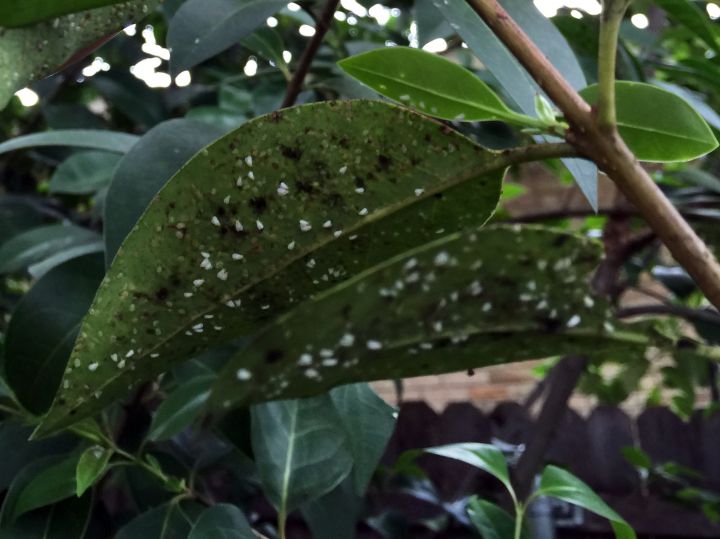
If you’ve noticed a particular pests crop up in your landscape give our maintenance team a call for solutions.
